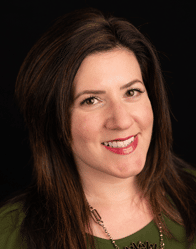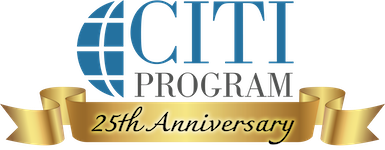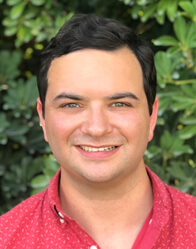Season 1 – Episode 24 – Universal Design: Campus Infrastructure
Universal design for learning is a framework which is often applied in educational settings to provide guidelines and accommodate individuals with different learning needs. The term universal design is also often used in architecture to ensure for inclusive design within infrastructure to accommodate all individuals. Both universal design for learning and infrastructure are important and necessary elements for higher education institutions as they incorporate elements of the Americans with Disabilities Act of 1990 (ADA). The ADA, along with universal design principles can provide an accommodating and inclusive environment for all students at an institution. CITI Program’s A 21st Century Approach to ADA Compliance: Equity and Access webinar is available to meet institutional needs.
Episode Transcript
Click to expand/collapse
Darren Gaddis: From CITI program, I’m Darren Gaddis, and this is On Campus.
Today, what is universal design? How does accessible infrastructure make a campus more accommodating? And what role do administrators, faculty, and students play in making a campus infrastructure more inclusive?
I spoke with Amanda Kraus, assistant Vice President for Campus Life and executive Director for disability resources at the University of Arizona. She is also associate professor of practice in higher education, where she teaches courses on student, services, and disability. Dr. Kraus is the immediate past president for the Association of Higher Education and Disability, AHED. And she travels around the country and abroad to give talks on ableism and universal design.
As a reminder, this podcast is for educational purposes only. It is non intended to provide legal advice or guidance. You should consult with your organization’s attorneys if you have questions or concerns about relevant laws and regulations discussed in this podcast. Additionally, the views expressed in this podcast are solely those of the presenter.
Hi Amanda. Thank you for joining me today.
Amanda Kraus: Hi, Darren. Thanks so much for having me.
Darren Gaddis: To get us started, what is universal design?
Amanda Kraus: Well, a definition of universal design is the design of products and environments to be usable by all people to the greatest extent possible without the need for modification or specialized design. It was really born out of architecture and design, though it has, I think, really important implications outside of those arenas.
Darren Gaddis: Amanda, to take that a step further, how does universal design for campus infrastructure maybe differ from universal design for a course?
Amanda Kraus: I think that’s a good question. I would say it may differ in how it looks, but the values and the spirit of universal design would be the same. There are seven principles to universal design, and I’ll just share them quickly. Equitable use, flexibility in use, simple and intuitive use, perceptible information, tolerance for error, low physical effort, and size and space for approach and use.
As I read those out or as I share those, I think we can get a sense that we’re really trying to promote inclusion and equity with universal design. Again, the outcome might be different for the campus infrastructure, we might be really looking at the built environment or the physical environment, which may be apparent in things like ramps or wide paths of travel or options in seating or parking and things like that. In a course, it would still be about options. It would still be about equity, looking at the course design, figuring out what is essential in that course, and then designing ways that more people can access it. Without compromising anything essential, what are the different ways to design something so that more people can use it the same way?
Darren Gaddis: With this in mind, what are some ways institutions can utilize universal design principles, those seven principles you just mentioned, into their infrastructure?
Amanda Kraus: I think there are a lot of ways, though relationships are important, I should say. If we’re really looking at campus infrastructure, you might look to your planning design or construction area, you might look at facilities management as some strategic colleagues to build a relationship with. It might be working together if you are with disability resources, working with those colleagues on plans for construction or major renovation, working together to consult on plans for events, working with event planners I think is a really important way to build UD, or universal design, into infrastructure.
Another really specific example is if your institution has design standards. If there’s something published or guidelines that your planning and design teams will look to, maybe you use that as a way to embed universal design into that planning. Looking at those guidelines, making sure that they exceed the Americans with Disabilities Act guidelines, so we’re not really just looking at basic compliance, but you’re exceeding that ground floor. You’re exceeding the legal requirement to promote more inclusion and to promote more universal design. I think it’s always great when you can systematize something. If you build UD into an important set of guidelines, I think that’s bound to make an impact on on-campus infrastructure.
Darren Gaddis: How does making campus infrastructure more accessible in turn make a campus more accommodating for all students?
Amanda Kraus: I really appreciate that question because, again, universal design comes from architecture, it comes from design. It doesn’t come from the disability community or the disability rights movement, although I think disabled people are inordinately impacted by good or bad design.
Really it comes down to equity, I think. When we invite students to campus, they’ve been admitted by the same standards. They’re held to the same academic and behavioral standards once they’re admitted and enrolled. Why do some students have a better or worse experience with the accessibility of campus infrastructure? That’s an equity issue. I think when we’re looking at universal design and trying to proactively remove barriers, ultimately what we’re saying is everyone’s welcome here and everyone’s going to have the same experience with this space, or with this event, or with this class as everyone else.
The benefits of universal design, I think it doesn’t advantage or disadvantage anyone, it doesn’t stigmatize a certain group. And really the reality of our campuses today is that students are diverse. I think we learned that over and over again in the last few years with COVID that people have a lot of different characteristics that impact the way they learn and work and teach. We don’t know who’s going to enter any given academic building or classroom or event space at any given moment. It’s very important to plan for the most diverse group of users. Universal Design has some really good strategies to help us think bigger about who may be engaging with, in this case, campus infrastructure, but it could be anything, an event, a class, et cetera.
Darren Gaddis: Amanda, today, you’ve spoken a lot about how universal design is closely connected to architecture, but in what ways does universal design go beyond that?
Amanda Kraus: It’s another good question. As a disabled person myself and as a wheelchair user, for me, I think a lot about choice and how sometimes my choices are limited by design. I think that is true, certainly for me in the built environment, but for others in other environments.
If we’re looking outside of infrastructure and looking more at curricular design or the classroom, again it’s what are those values that we want to be promoting? And I think we would want to promote diversity and inclusion. We do want people to feel welcome, not just tolerated in our classrooms. You can think about just any way that students navigate campus, that students spend their time on campus. A lot of times that’s in the classroom, but also there’s huge community, social gatherings, events, things like that. And I would say that the design of all of these features really do communicate something. They communicate the institution’s assumptions, I would say, about who they were expecting, who they assumed would be a student here or an attendee at the event. There are lots of ways that design can actively and passively communicate to you that you are or are not welcome in a space.
That’s really what it comes down to, I think, is who are we planning for? Who do we want here? Who do we make feel welcome here? There’s any number of design choices that go into decision-making and event-planning and course design. At any point along the way, we as designers, we as faculty, we can all be asking ourselves, with the choices that I have, how can I make this the most inclusive, the most barrier-free experience? And I think that process will lead to a better outcome, and that outcome will make people feel welcome.
It’s not just about feeling welcome. It’s about being able to do everything together, to have the same level of choice, the same feelings of support. When I said earlier when I was listing out the seven principles of universal design, I mentioned low physical effort, but I think we could just say low effort. You might think low emotional effort, low energetic toll. If you’re navigating a space and you just feel like, “This is not made for me,” there’s a lot of burden associated with that. It could be about planning where you can actually go and be comfortable. It could be responding to any number of cues in the environment about where you should be or who should be present. And that does take a toll. I think in many ways, design can really contribute to microaggressions. But the flip side of that is good, inclusive design I think can also reduce or potentially eliminate microaggressions or similar kinds of inequities and make people feel a real part of that experience.
Darren Gaddis: What else should we know about universal design?
Amanda Kraus: There’s a lot to know about universal design. There’s lots of good information about each of the principles. You can search for them online to get guidelines and images and really practical strategies. There’s also a number of applications of universal design. Like we’ve talked about, it’s not just about the built environment or campus infrastructure, but there are offshoots of UD to be applied in the classroom and in your teaching. You can look at Universal design for learning as one, I think, really prevalent application of UD. And that really can guide the way we design our courses to promote multiple means of representation. How do I represent content? I’m trying to do that in different ways, multiple means of engagement. When I’m asking students to participate and engage with me and one another, are there different ways that they can do that? And then multiple means of expression, when students are required to demonstrate or express what they’ve learned, are there different ways for them to do that?
Even though it looks different, I still believe that the values are shared between universal design and its applications. Again, really trying to promote, I would say not just inclusion, but equity. I think sometimes in my work, when people do feel that maybe universal design is too big a goal, can we think about equity and use universal design strategies or universal design principles to help us create a more equitable experience?
Darren Gaddis: Amanda, as always, thank you for joining me today.
Amanda Kraus: Thank you. It was a fun conversation.
Darren Gaddis: Be sure to follow, like, and subscribe to On Campus with the CITI Program to stay in the know. I also invite you to review our content offerings regularly as we are continually adding new courses and webinars that may be of interest to you.
All of our content is available to you anytime through organizational and individual subscriptions. You may also be interested in CITI Program’s A 21st Century Approach to ADA Compliance: Equity and Access webinar. Please visit the CITI Program website to learn more about all of our offerings.
How to Listen and Subscribe to the Podcast
You can find On Campus with CITI Program available from several of the most popular podcast services. Subscribe on your favorite platform to receive updates when episodes are newly released. You can also subscribe to this podcast, by pasting “https://feeds.buzzsprout.com/1896915.rss” into your your podcast apps.
Recent Episodes
- Season 1 – Episode 23: Open Access: Federal Rule Change
- Season 1 – Episode 22: Clery Act Training
- Season 1 – Episode 21: Student Engagement: Colleges and Universities
- Season 1 – Episode 20: Flu Season and College Campuses
Meet the Guest

Amanda Kraus, PhD – University of Arizona
Dr. Amanda Kraus is Assistant Vice President for Campus Life and Executive Director for Disability Resources at the University of Arizona.
She is also Associate Professor of Practice in Higher Education. Dr. Kraus is President of the Association of Higher Education and Disability (AHEAD) Board of Directors.
Meet the Host
Darren Gaddis, Host, On Campus Podcast – CITI Program
He is the host of the CITI Program’s higher education podcast. Mr. Gaddis received his BA from University of North Florida, MA from The George Washington University, and is currently a doctoral student at Florida State University.








